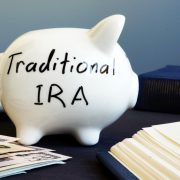What Are the Advantages of a Self-Directed Traditional IRA?
The Self-Directed Traditional IRA is the oldest style of retirement investment account in the United States that is still used today—they were first established in 1974 as the first IRAs, and became available for investing in 1975. To many investors, that may make the Traditional IRA sound outdated. New IRAs have come out since then, and they often have intriguing features and advantage. Which leads us to today’s question: if you are considering a Self-Directed Traditional IRA, what kinds of advantages can you expect?
What is the Self-Directed Traditional IRA?
To answer that question, we first have to turn to what exactly a Traditional IRA is in the first place. Let us take NerdWallet’s definition and extrapolate from there:
A traditional IRA is a type of individual retirement account in which individuals can make pre-tax contributions and the investments in the account grow tax-deferred. In retirement, the owner pays income tax on withdrawals from a traditional IRA.
In other words, a Traditional IRA is a pretty straight-forward retirement account. You can use it to make contributions directly to your retirement account. In a Traditional IRA, you are using tax-deferred contributions, which means that you may be able to take deductions on these contributions, thus “deferring” the tax until you take money out of the account. When you wait until retirement age—at which point you can begin taking money out of the account—then the money is taxed as ordinary income. Voila! Retirement income.
The instant advantage to using a Self-Directed Traditional IRA over, say, a Roth IRA is the fact that you can use tax-deferred contributions; with a Roth IRA, you will be using after-tax contributions. The flip side of the Roth IRA is that your money grows tax free; and since you have already paid taxes on it, valid withdrawals later on in life will not be taxed. For that reason, many people often consult with accountants to estimate what their income will be then, what it is now, and how they might optimize their own retirement future.
The Advantages of Using a Self-Directed Traditional IRA
Let us start by comparing an investment within a Traditional IRA to an investment in a taxable brokerage account. The money you keep in a Traditional IRA gives you immediate savings from the tax-deferred status of contributions. Contributions to a taxable account are, of course, essentially personal and non-retirement funds, and therefore not treated in any special way. There is no getting a tax deduction because you put some money in the stock market in a general, taxable account.
One key issue is growth. With a Traditional IRA, the money “inside” the Traditional IRA can continue to grow without you yet owing taxes on it—at least, if you have not taken it out. But with a classic taxable account, if you sell a stock at a gain, you will immediately owe taxes on the appreciation.
After the Roth IRA entered the picture, many people use it because they want to front-load the pain of taxation so they can enjoy a larger income in retirement. And this is certainly a valid strategy for many people. But with any Self-Directed retirement strategy, it is important to remember that you are in charge. Consult with a financial professional to learn which might be optimal for you. And with a Self-Directed Traditional IRA, you may have access to a wide range of investments from precious metals to real estate, both commercial and residential. The key: knowing what you want to accomplish.
Interested in learning more about Self-Directed IRAs? Contact American IRA, LLC at 866-7500-IRA (472) for a free consultation. Download our free guides or visit us online at www.AmericanIRA.com.










